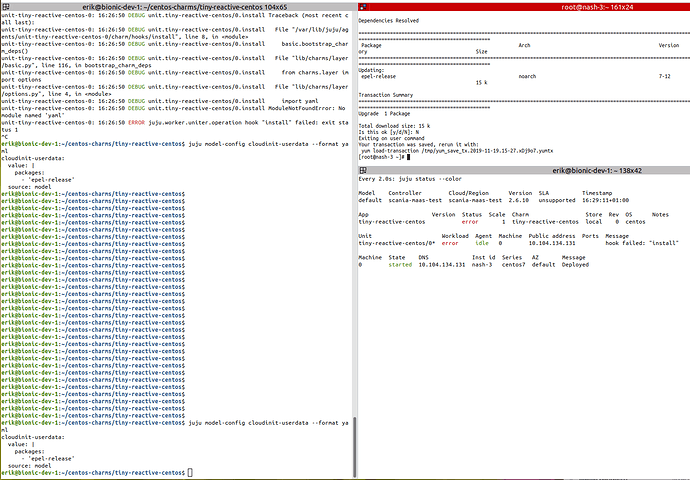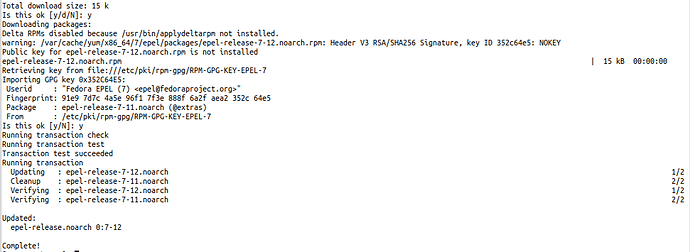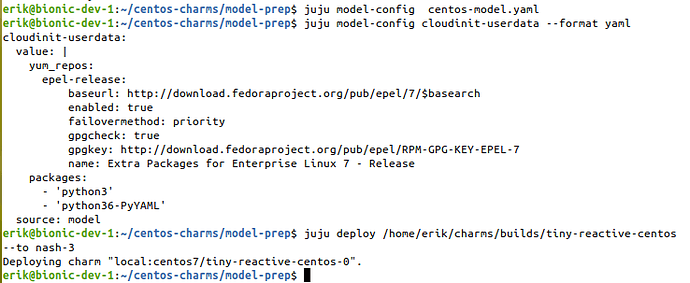@erik-lonroth, as you’ve probably seen, me and my team are working on developing the Lucky charming framework and Centos support is something that we are very interested in.
To address your stated problems:
- Lucky doesn’t use charmhelpers and is a standalone binary that doesn’t have any dependencies on Python or anything else, so that shouldn’t be a problem
- Lucky doesn’t have layers so that isn’t a problem
-
lucky charm create will create a charm that should be able to be deployed anywhere
That said, there are other potential problems to consider:
Installing Docker
Because Lucky charms don’t have layers, the primary way to install software dependencies will be to create a Docker image that contains all of the aplication’s dependencies. This means that we must be able to install Docker on all target systems ( Ubuntu, CentOS, etc. ).
I have heard of people having problems installing Docker on RHEL/CentOS, so that may be somewhat difficult, but it is possible to do. We will just have to build in to Lucky different methods of installing Docker for the different distros. ( BTW, we might do this with the Docker snap, but it has problems on CentOS too. )
The good thing about putting your application dependencies in Docker is that the application’s software packages are now portable across CentOS and Ubuntu. If I write a charm and my charm’s Docker image is based on Ubuntu and I use apt to install my application dependencies, then that charm will still run on CentOS, and even other versions of Ubuntu, without changes because it is in a Docker image.
Bash vs. Python
Lucky will initially target bash scripts as the primary way of developing charms. We believe that this should be fully sufficient for most use-cases, but that is up to interpretation.
We are not sure exactly what Python support in Lucky will look like on the first release, but at the very least you will have to interact with Lucky by calling the Lucky CLI from your Python script instead of having the luxury of a Python library with Python functions to call. This will most-likely change in the future, but it won’t be the first thing out of the gate.
Relations
Related to using Bash instead of Python, you will have to interact with the Juju relations without any helper Python libraries that come with the Juju interface layers. The Lucky CLI will have commands to make interacting with the relations as easy as possible, but it will not initially have support for interface-specific helpers. You will have to read and write the key-value pairs on the relation yourself. My initial observation leads me to believe that interacting with the relations like this will not be a burden, but that is up to interpretation.
We are going to work to make this as easy as possible, but we are going to have to do some experimentation to find out what the best workflow will look like.
Under Development
The final concern with Lucky is that it isn’t finished yet. We are expecting to be able to get a first release out within the next two months, but hopefully much sooner. Even after a first release, the Lucy CLI will probably be changing and you may have to keep up with that for the first while, but if you try it out and have use for it we will do what we can to make it work for your use-case.
Assuming that the CentOS support problems come only from the charming framework and not Juju itself ( which is what it looked like from your stated problems, if I understand correctly ), I think that we will reasonably be able to support CentOS with Lucky.
Does this sound like something that would help you? I’m open to questions or suggestions. Is there anything that you think would be a blocker for you, such as needing Python or not wanting to use Docker?




